AI generated? HSC English exam’s dubious stimulus sparks debate among Year 12 students
Year 12 students have blasted the NSW Education Standards Authority over what they claim was the use of artificial intelligence in the first HSC exam. Here’s how it all went down.
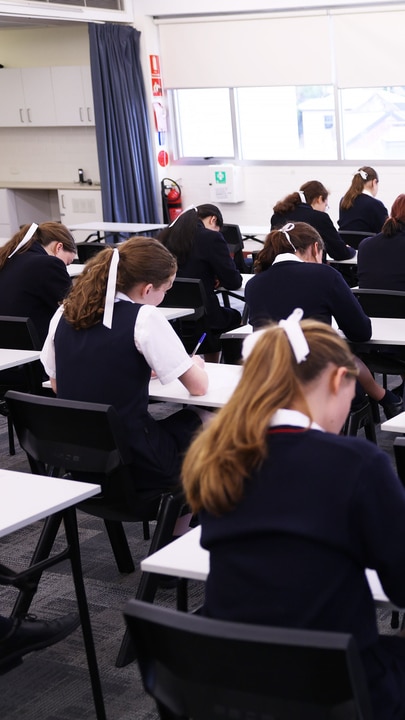
Education
Don't miss out on the headlines from Education. Followed categories will be added to My News.
Dozens of Year 12 students have blasted the NSW Education Standards Authority over what they claim was the use of artificial intelligence in the first HSC exam, with the agency unable to verify whether one of the stimuli put before test-takers was AI-generated or not.
The first of two standard and advanced English papers, taken by some 60,000 students across both courses on Tuesday, required students to compare an extract from Elizabeth Strout’s fiction novel My Name is Lucy Barton and an unattributed image of a table covered in devices and wires overlooking a river, with the question worth five of a total 40 marks.
Social media was soon ablaze with rumours the “photograph” was in fact AI-generated, with students accusing NESA of being “hypocritical” in developing the paper.
“They always yap about how using AI is malpractice and then they do this,” one student complained.
“I spent five minutes unable to focus on anything but the fact that it was clearly AI generated, I was so pissed off,” another said.

The picture was extracted from an online article written by Florian Schröder, Berlin-based “AI enthusiast” and co-founder of digital “magazine” AI Rockstars.
Though neither NESA nor schools and teachers in the Department of Education are banned from using artificial intelligence, students are advised that “unapproved use of AI in the completion of assignments is a breach of academic integrity” punishable as a form of cheating.
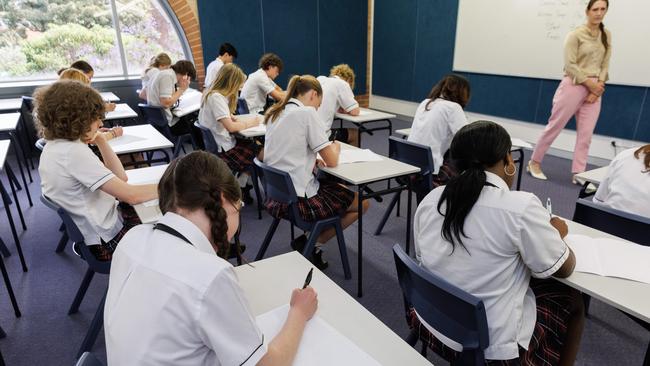
NESA was investigating the origin of the image on Tuesday, with a spokeswoman confirming regardless of whether the students thought the image was AI-generated, it will not have any bearing on their results.
Former HSC English chief examiner Dr Janet Dutton also moved to reassure students who referred to the use of AI that their answers “can absolutely be accommodated”.
“All images are constructed, so whether it is AI-generated or it’s been photoshopped or something, that is the case for most images we’re seeing in publications,” Dr Dutton said.
“If (students) are offering evidence for the point that they’re making and can support it from the text … it is not inherently a problem (if they mistake the image for AI).”
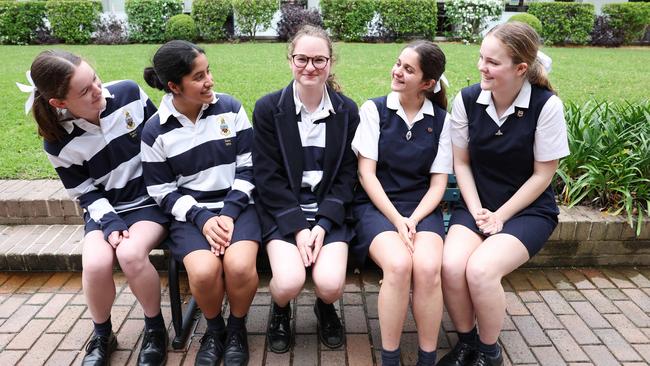
Elsewhere online, HSC students vented about being unable to finish the exam in its entirety, with some leaving part of the short answer section incomplete while others were cut off while still writing their essay.
“My conclusion was shocking,” one student grumbled.
“I didn’t even write a conclusion,” another replied.
“I only wrote an intro for the essay. Am I f**ked?” another said.
Advanced English students at inner-city girls’ school SCEGGS said the paper was a marathon, with six stimuli included in the short answer section and several of those being long, written extracts.
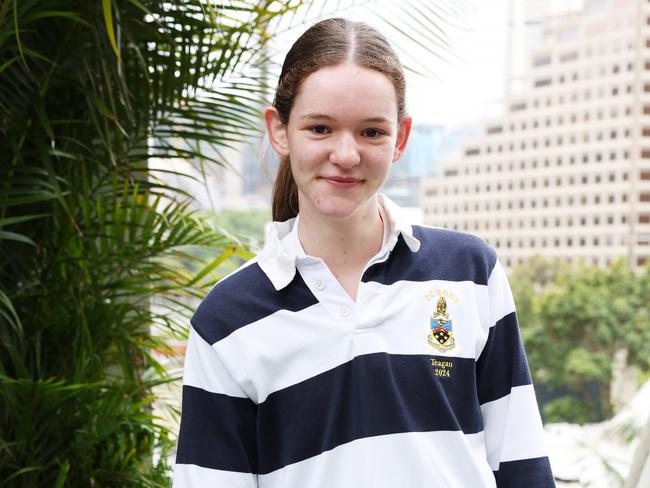
Bella Stern said the paper was “very predictable but wordy” while Teagan Barrack was surprised to find the flow of the text to be substantially different to past exams and other papers she had practised with.
“Some of the themes were a little bit random, like smell and measurement, which I found a bit harder to engage directly with the broader theme of the human experience,” she said.
For classmate Ariane Moisidis the length of the extracts and organisation of the questions rocked the exam strategy she had sat down with.
“Usually if there’s a long comparison at the end, worth six or eight marks … I would get to the first part of the reading task and then spend whatever time I have left on the comparison,” she said.
“It being in the middle of the reading task … threw me a little bit.”
SCEGGS Head of English Jenny Bean said time management could prove a stumbling block for test-takers, despite the “accessibility” of the texts themselves.
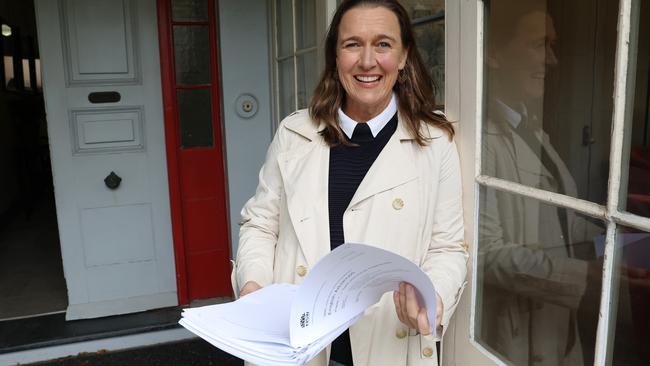
“I think that we’ve certainly seen, over the last few years, an increase in the amount of reading,” she said.
“The challenge for students is that often you might need to read a text two or three times to really pick things up, and some of these texts are lengthy.”
Most exam discourse for students revolved around an extract of journalist James Vincent’s book Beyond Measure, with students asked to “analyse” the piece for four marks.
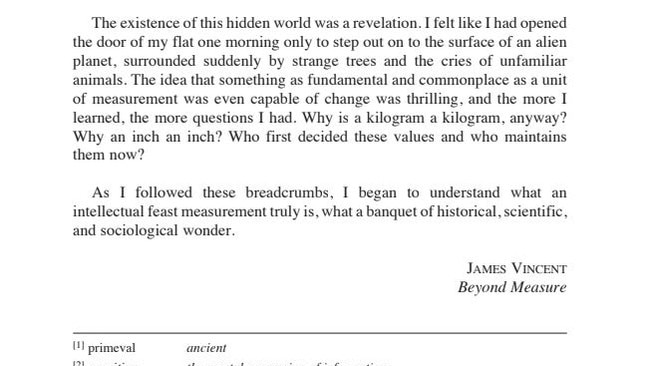
Loreto Normanhurst Head of English Ellen Lincoln said the extract was “a challenging text” that would require students to think laterally, in an already crowded paper.
“It’s on the high end of the number of texts kids can engage with in that period of time,” she said.
“It just takes up more cognitive space, having to switch to a new text – even if they’re short it’s still a taxing mental load.”
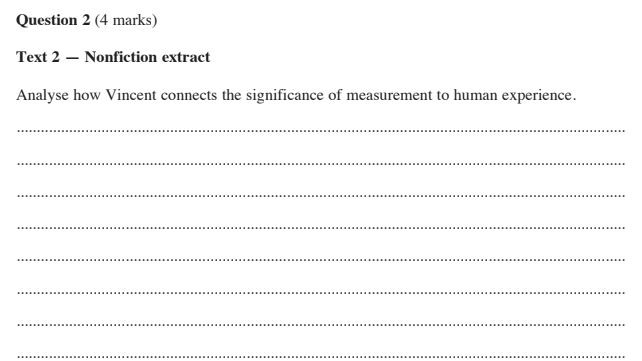
Ravenswood School for Girls English teacher Josh McMahon found the exam vindicated the school’s focus on improving the girls’ skills in speed reading.
“This was a paper that really rewarded students who know how to do an exam, who have worked on those exam skills,” he said.
“To get those top marks, they would’ve had to stay calm under pressure.”
English examinations will continue on Wednesday as the almost 60,000 students in the standard and advanced courses return to the exam hall for paper two.
The second exam is even more rigorous than the first, requiring students to pen three separate extended responses – two essays and one creative work – within two hours.





